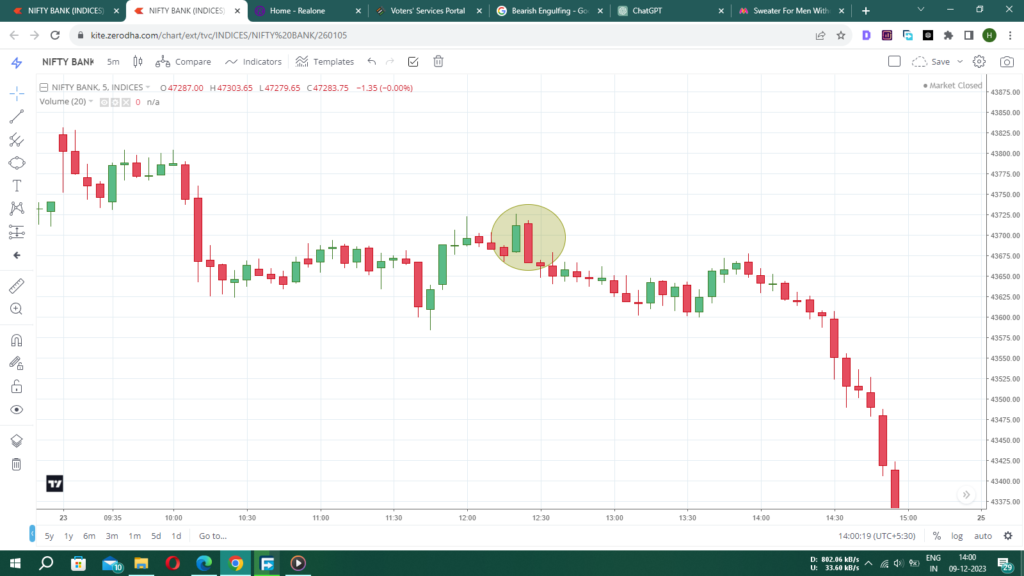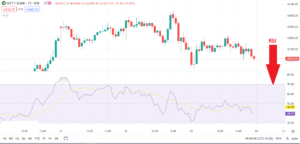Bank Nifty Down Today: Understanding the Market Dynamics – In the intricate world of finance, where the tides of the market can change rapidly, one term that often captures the attention of investors is “Bank Nifty.” Today, we delve into the nuances of why Bank Nifty might be experiencing a downturn, exploring various factors and providing insights for investors to navigate through the uncertainties.
Bank Nifty Down Today: Understanding the Market Dynamics / Bank Nifty Down Today: Understanding the Market Dynamics

Factors Influencing Bank Nifty
Economic Indicators In the realm of financial markets, economic indicators act as crucial signals. A close examination of these indicators, such as GDP growth, inflation rates, and employment figures, can provide valuable insights into the health of the banking sector.
Global Events The interconnectedness of global markets means that events on the international stage can significantly impact Bank Nifty. From geopolitical tensions to global economic shifts, various factors can contribute to the downward movement.
Government Policies Government policies, especially those related to the financial sector, play a pivotal role. Changes in interest rates, regulatory frameworks, and fiscal policies can directly influence the performance of Bank Nifty.
Technical Analysis of Bank Nifty
Historical Performance Analyzing historical data is a cornerstone of understanding market trends. Examining Bank Nifty’s past performance can uncover patterns and potential indicators of the current downturn.
Key Metrics Key metrics, such as price-to-earnings ratio, return on equity, and debt-to-equity ratio, provide a comprehensive view of the financial health of banking stocks within the Nifty index.
Chart Analysis Technical analysis, through charts and graphs, offers a visual representation of market movements. Traders often rely on chart patterns to make informed decisions.
Reasons Behind the Downfall
Market Sentiment Investor sentiment is a powerful force in the financial markets. Negative sentiment, fueled by various factors like economic uncertainties or geopolitical tensions, can contribute to a decline in Bank Nifty.
Sector-Specific Issues Sometimes, challenges within the banking sector itself, such as non-performing assets or regulatory hurdles, can lead to a downturn in Bank Nifty.
External Economic Factors External economic factors, such as changes in global commodity prices or currency fluctuations, can have a cascading effect on Bank Nifty.
Impact on Investors and Traders
Loss Mitigation Strategies For investors witnessing a downturn, implementing effective loss mitigation strategies is crucial. Diversification, stop-loss orders, and portfolio rebalancing are some approaches to consider.
Long-term vs. Short-term Perspective Understanding the difference between short-term market fluctuations and long-term trends is vital for making informed investment decisions.
Market Psychology The emotional aspect of trading cannot be ignored. Understanding market psychology and avoiding knee-jerk reactions is essential for sustainable investing.
Expert Opinions and Analysis
Insights from Financial Analysts Seasoned financial analysts provide valuable perspectives on the current state of Bank Nifty. Their insights can guide investors in making informed decisions.
Future Projections Experts often share their projections for the future. While these are not crystal-clear predictions, they can offer a glimpse into potential scenarios.
Potential Recovery Strategies Recovery strategies, suggested by financial experts, can include adjusting investment portfolios, exploring new sectors, or adopting a defensive investment approach.
Learning from Market Fluctuations
Risk Management Market fluctuations underscore the importance of robust risk management strategies. Diversifying investments and setting realistic expectations can mitigate potential losses.
Diversification Diversifying one’s investment portfolio across different sectors and asset classes is a fundamental principle for managing risk.
Importance of Continuous Learning Financial markets are dynamic, and continuous learning is essential. Staying informed about market trends and adapting to changes is key for investors.
Case Studies
Previous Instances of Bank Nifty Declines Examining past instances of Bank Nifty declines can offer valuable insights into how the market recovered and what strategies proved effective.
Successful Recovery Stories Stories of successful recovery after market downturns inspire confidence and provide real-world examples of resilience in the face of challenges.
Lessons Learned Analyzing case studies helps investors and traders learn from the experiences of others, avoiding common pitfalls and making more informed decisions.
Navigating Volatility in Financial Markets
Tips for Investors Navigating volatility requires a strategic approach. Tips for investors may include staying informed, avoiding impulsive decisions, and having a diversified portfolio.
Strategic Approaches Adopting strategic approaches, such as dollar-cost averaging or contrarian investing, can be effective during periods of market volatility.
Staying Informed In a fast-paced market environment, staying informed about economic indicators, company news, and global events is crucial for making timely decisions.
The Role of Media in Shaping Market Perceptions
Media Influence on Investor Sentiment Media plays a significant role in shaping investor sentiment. Analyzing news coverage and understanding media biases can help investors make more objective decisions.
Responsible Reporting Practices Media outlets have a responsibility to report accurate and unbiased information. Investors should be discerning in their consumption of financial news.
Evaluating News Sources Diversifying news sources and cross-referencing information can help investors separate noise from valuable insights.
Community Discussions and Sentiments
Online Forums and Social Media Community discussions on online forums and social media platforms can influence market sentiments. However, investors should approach these discussions with caution.
Impact on Market Trends The collective sentiment expressed in online communities can sometimes impact short-term market trends. Understanding these dynamics is essential for investors.
Analyzing Public Sentiment Monitoring public sentiment through sentiment analysis tools can provide additional insights into potential market movements.
Regulatory Measures
Government Intervention Governments may intervene during times of economic turmoil. Understanding the regulatory landscape and potential government interventions is crucial for investors.
Role of Regulatory Bodies Regulatory bodies play a key role in maintaining market stability. Investors should be aware of regulatory measures and their potential impact.
Market Stability Measures Various measures, such as circuit breakers and trading halts, are implemented to ensure market stability during extreme fluctuations.
Future Market Outlook
Anticipated Changes Analyzing potential changes in economic policies, global events, and market dynamics can provide clues to the future direction of Bank Nifty.
Potential Catalysts for Recovery Identifying potential catalysts for recovery, such as positive economic indicators or regulatory reforms, is essential for optimistic market outlook.
Long-term Predictions While making long-term predictions is challenging, evaluating the broader economic landscape can help investors make more informed decisions.
Conclusion
In the ever-evolving landscape of financial markets, the downward movement of Bank Nifty today offers both challenges and opportunities. By understanding the underlying factors, adopting strategic approaches, and learning from past experiences, investors can navigate the complexities and position themselves for long-term success.
FAQs
- Q: How often does Bank Nifty experience significant fluctuations?
- A: Bank Nifty can experience significant fluctuations periodically, influenced by various economic, geopolitical, and sector-specific factors.
- Q: What should investors do during a downturn in Bank Nifty?
- A: Investors should focus on effective risk management, diversify their portfolios, and avoid making impulsive decisions during downturns.
- Q: Are there specific sectors within Bank Nifty more prone to volatility?
- A: Certain sectors within Bank Nifty, such as banking and financial services, may be more prone to volatility due to their sensitivity to economic changes.
- Q: How can investors differentiate between short-term fluctuations and long-term trends?
- A: Understanding the fundamental factors driving market movements and conducting thorough research can help investors distinguish between short-term fluctuations and long-term trends.
- Q: What role does investor sentiment play in the performance of Bank Nifty?
- A: Investor sentiment can significantly impact Bank Nifty, influencing short-term movements. It’s essential for investors to be aware of and manage the psychological aspect of trading.




